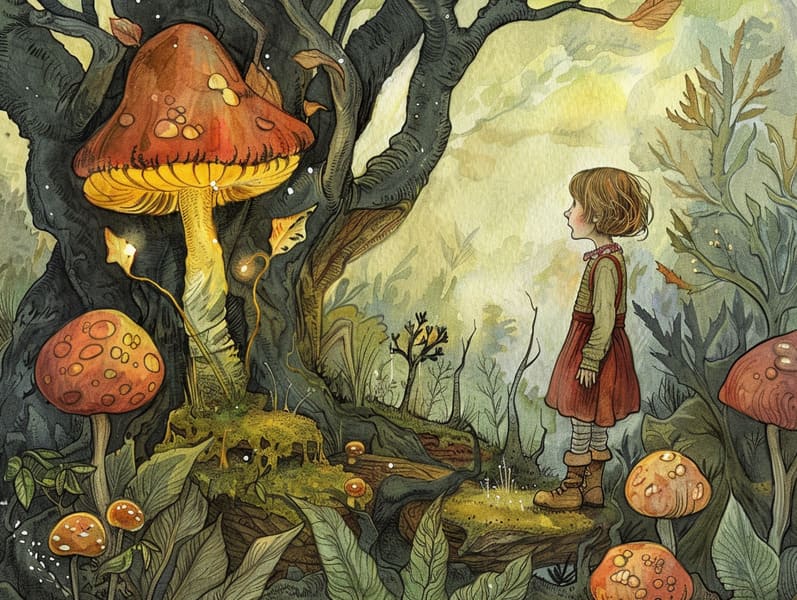The Beginning of Legendary Fairy Tales with the Everlasting Loveliness.
The Beginning of Legendary Fairy Tales with the Everlasting Loveliness.
Blog Article

Best fairy tales have historical significance. These narratives have been recounted from one generation to the next long before they were ever documented. They sprang from a variety of cultures, including Indigenous traditions. They were initially transmitted among mature audiences, often carrying themes and messages mirroring the societal norms and beliefs of the time.
The renowned Brothers Grimm, the two Grimm brothers, were among the first to assemble many of these beloved fairy tales. Their compilation, "Grimm's Folk Tales," included tales like "Cinderella," "The Story of Hansel and Gretel," and "Snow White," which have since become classics in the world of traditional fairy tales. Similarly, Hans Christian Andersen's magical narratives, such as "The Story of the Little Mermaid," and "The Duckling that Could," have gained the love worldwide, guaranteeing their place in the pantheon of famous fairy tales.
Despite their ancient origins, these tales remain as important as ever, especially as nighttime stories for kids. These charming stories are now available in various formats, including artistically illustrated books, whimsical animations, and free fairy tales online.
Their unwavering allure can be linked to several delightful features:
Key Lessons: Old fairy tales often convey important moral lessons. Fairy tales like "The Shepherd Boy and the Wolf" teach the benefit of truthfulness, while "The Tale of the Tortoise and the Hare" demonstrate the virtues of resolve and humbleness. These narratives offer the young clear distinctions between ethical and unethical, developing their moral compass in a gentle yet meaningful way.
Sympathy and Perception: Classic fairy tales frequently portray heroes facing challenges and problems, inciting readers to comprehend with their struggles and encourage their triumphs. For instance, "Beauty and Her Beast" reveals the significance of seeing inner beauty to know the inner spirit of a individual, fostering sympathy and comprehension.
Cultural Insights: Many timeless fairy tales are imbued with the cultural contexts from which they emerged. Understanding these fairy tales can provide delightful insights into different ways of life, enhancing a sense of international awareness and comprehension.
Imagination and Innovation: The fantastical elements in traditional fairy tales—magic wands—foster children’s fantasies. These stories guide readers to mythical realms, engendering innovative dreams and a sense of mystery that persists a lifetime.
Ancient fairy tales are not only enchanting but also teaching. They work as mesmerizing tools in enhancing various cognitive and affective skills in young readers. When traditional fairy tales are spoken out loud, they nurture linguistic abilities by presenting new terms and detailed sentence structures. This practice also cultivates hearing abilities and mindfulness, as little ones track the narrative, keen to see what happens next.
Furthermore, discussing the themes and characters of ancient fairy tales can enhance logical thinking and logical thinking. Children are instructed to spot patterns, expect results, and realize cause and effect. These reflections also help young readers speak out their thoughts and feelings, strengthening their emotional intelligence.
In today’s cyber age, the availability of digital storybooks has made these narratives more within these guys reach than ever. Websites and online apps present huge assortments of children's fairy tales that can be accessed or heard anytime, anywhere. Fairy tales voiced are particularly common, presenting an entertaining method for the young to delight in these enchanting tales. Spoken stories and read-out-loud stories bring characters and settings to life, often accompanied by delightful music and songs that improve the tale journey.
The lasting appeal of classic fairy tales lies in their ability to adapt to present eras while sustaining their main lessons. Contemporary reimaginings of these fairy tales often incorporate more representative characters and modern settings, making them accessible to today’s audience. However, the fundamental themes of valor, kindheartedness, and fairness remain unchanged, continuing to appeal to kids of all ages.
Old fairy tales also offer a sense of ease and homeliness. They afford a orderly narrative with a apparent beginning, middle, and end, often coming to a close with the settlement of conflicts and the triumph of righteousness over wickedness. This certainty can be relieving for little ones, offering a sense of sturdiness in an ever-changing world.
Traditional fairy tales continue to spellbind and coach new generations, maintaining their enchantment and applicability in modern society. As kids' bedtime tales, they extend a perfect blend of fascination and comprehension, encouraging moral values, empathy, and creativity. The availability of digital storybooks and the likability of fairy tales recited make sure that these ancient stories remain accessible to new generations.
By upholding and distributing these stories, we continue to extol the rich tapestry of myths and cultural heritage. Whether you are viewing a beautifully illustrated book, experiencing a digital collection, or listening via an audiobook, the allure of famous fairy tales is always within reach. These fairy tales convey of the invariable magic of narratives and its ability to unite us across epochs and places.
No matter if you are accessing a colorful picture book, experiencing a digital collection, or listening through an read-aloud book, the delight of traditional fairy tales is always within reach.
These stories teach us of the unchanging influence of narratives and its ability to draw us together across eras and regions, creating a bond that enchants and educates alike.